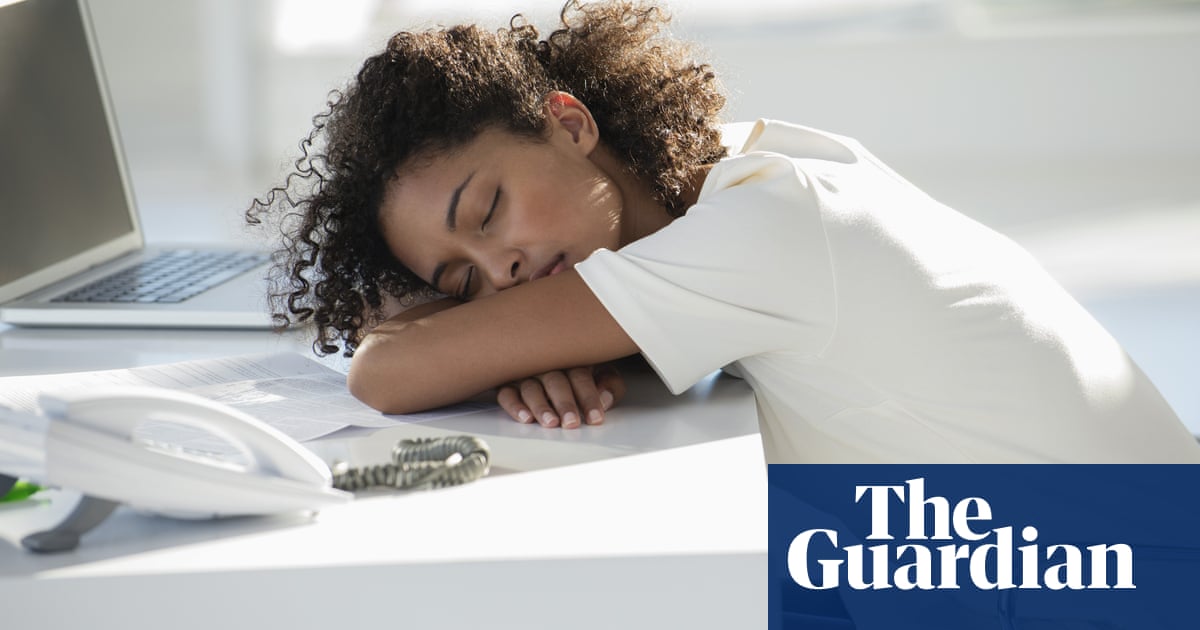
Winston Churchill was a past master, while Salvador Dalí made it an art and Margaret Thatcher allegedly did it in the back of her official car. Napping has long been a habit of the elite, but recent research has led to renewed calls for employees to be allowed to doze on the job, too.
According to a study published this week, habitual napping appears to be associated with a larger brain volume in adults, with scientists suggesting this raised the possibility the practice offers some protection against neurodegeneration – although experts stressed that further research was needed. The work followed previous studies that suggested a brief doze could improve people’s ability to learn.
Arianna Huffington, a co-founder of HuffPost and the founder and chief executive of wellness company Thrive Global, said: “Given the latest science on the effectiveness of napping and the clear link between employees feeling well rested and their productivity, it’s long past time that businesses embrace short naps at work.”
She is not alone. Dr Mattie Toma, an assistant professor in the behavioural science group at Warwick University, said her own research among low-income urban workers in India found half-hour afternoon naps boosted attention, wellbeing and productivity.
“Given the emerging evidence around the benefits of naps, not only for worker wellbeing but also for a company’s bottom line, companies ought to consider offering their employees the chance to nap,” said Toma.
Prof Sara Mednick, of the department of cognitive sciences at the University of California, Irvine, agreed. “We are a sleep-deprived people, which makes us more prone to accidents at work, lower levels of creativity and concentration, and higher levels of irritability,” she said.
“Businesses providing a space to rest will reduce the costs that incur from the lost time and the fatigue-related errors. It also gives the higher-ups the chance to acknowledge the challenges of the 24/7 culture and come up with top-down solutions that encourage workers to take care of themselves in and out of work, which goes a long way in terms of retention.”
Some businesses, including Thrive and HuffPost, have already introduced facilities for employees to take naps, with Google introducing sleep pods as far back as 2014 and companies including Nike and Ben & Jerry’s introducing nap rooms.
The practice has even been adopted by the NHS, with a growing number of hospitals introducing sleep pods for staff in an effort to help them get more rest.
Employees, it seems, are enthusiastic. Sean Greenwood, of Ben & Jerry’s, said: “I think our experience is that rested employees are much more involved and creative, and if a quick nap helps serve that purpose, we’re happy to provide that for our team members.”
There is still work to do to rehabilitate the idea of a doze, however.
Huffington said: “Unfortunately, the practice of napping still suffers from our collective delusion that equates sleep with weakness and laziness, but the performance-enhancing benefits of naps have been no secret to many leaders throughout history.”
While sleep experts stressed that a daytime doze could be beneficial, they said it was crucial to get enough shut-eye at the end of a day.
“Napping per se is not necessary for everyone, but can be helpful for some,” said Colin Espie, a professor of sleep medicine at the University of Oxford. “Importantly, it is often an indication that people are not getting sufficient good quality sleep at night, so they need to catch up.”
The solution, he said, was to encourage good sleep health. Espie’s five principles, developed for the NHS Every Mind Matters campaign, include prioritising sleep, experimenting to discover the best time and duration of sleep, and avoiding influences that can upset sleep – be it caffeinated drinks in the evening, a stuffy bedroom, or the use of phones and tablets at night.
“If people feel the need to sleep regularly during the day, then they should at least consider that they might have a sleep problem, and that it’s more than a lifestyle thing,” he added.
Previous research has also suggested excessive daytime napping may be an early warning sign of declining cognitive health.
Valentina Paz, a co-author of the study published this week into daytime dozing and brain size, said more work was needed to untangle the association between napping and brain health.
“Based on previous findings, we know that taking a short nap in the early afternoon may benefit those needing it,” she said.
However, Paz added: “Previous studies have reported mixed findings regarding the association between napping and brain health, so … further work is needed on this topic.”
How to have a good nap
According to experts, naps are best kept brief – about 20 minutes – and Espie suggested that just five or 10 minutes was enough.
“It should not be like entering a major sleep episode,” he said. “If napping is too long, you wake up feeling worse and suffer sleep inertia.”
As well as sleep inertia – a feeling of grogginess and low performance after waking up – lengthy naps can also cause other problems, with Espie noting they can reduce the drive for sleep at night.
To avoid a nap ruining a good night’s sleep, some experts also recommend avoiding one after 3pm.
One way to boost the impact of a nap is to drink a couple of cups of coffee before falling asleep for 15 minutes or so – an approach recommended to drivers who experience fatigue.
This works because a nap can reduce levels of adenosine – a chemical that causes feelings of sleepiness when it binds to receptors in the brain. As caffeine subsequently kicks in, it blocks these receptors, preventing adenosine from binding to them and inducing sleepiness. This, in turn, boosts neural activity. The upshot is a double whammy, increasing alertness.
However, Dr Carolin Reichert, deputy head of the centre for chronobiology and assistant psychologist at the centre for affective, stress and sleep Disorders at the University Psychiatric Clinics of Basel, said it can take 30 minutes or more for caffeine to be absorbed by the gastrointestinal tract, while animal studies have suggested that clearing of adenosine does not occur in the early stages of sleep, meaning a longer rest may be needed to reap the greatest benefits.
“Most likely, it takes around 20-30 minutes until you enter deep sleep in the afternoon,” she said.









